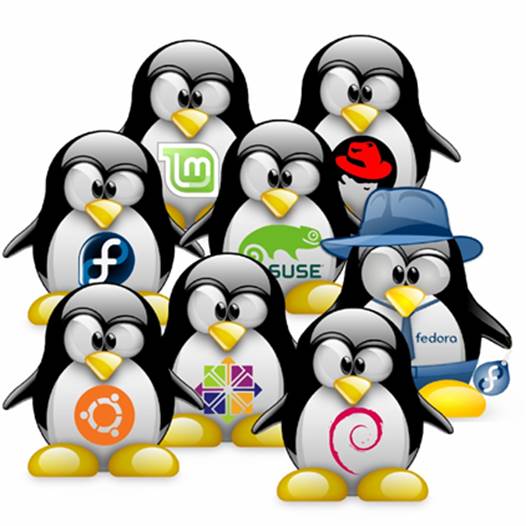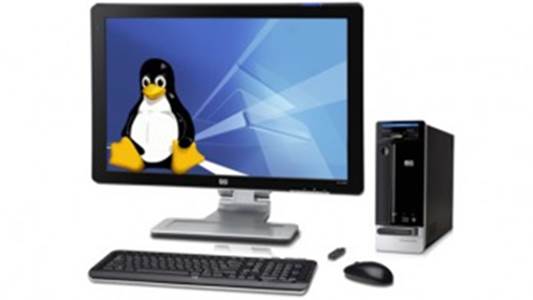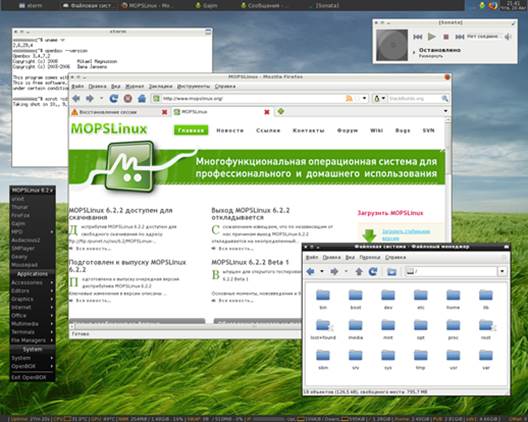Looking at the world map, it seems
that Russia is far, far away to the North. So, ask an ordinary person about
Russia and the response would probably involve “winter, military weaponry and
oil”. However, Russia also has a strong Linux development experience. Read on
to learn more.
When GNU/Linux was new, it began to attract
the attention of technical specialists in Russia in the second half of the 90s,
because of its excellent networking capabilities and the incomparable
productivity level – Linux could run on hardware like an Intel DX 486 with 8 MB
RAM quite easily. Besides, you could have several simultaneous Internet
sessions of lynx, or the links browser, as well as a text session in
mcedit/vi/joe; plus, you could at the same time do some programming exercises
with EGCS. Should I mention that such operations were an available in
live-mode, started off from a usual floppy-disk, though in text mode? The same
productivity level wasn’t possible with Microsoft Windows 3.11, 95 or NT 4.0
even on a higher level of hardware like Intel Pentium, with 32 MB RAM and 1 GB
HDD.

Hot
technologies from a cloud country
Moreover, if you had experience with Linux
back then, you were guaranteed to be able to either with your local machine, or
with very distant UNIX-based hosts (for example, Solaris or FreeBSD) outside
the country at an equally productivity level. SSH protocol allowed you to
perform such operations quite easily. In addition, a very compact size, great
performance and tremendous opportunities of the system (Linux) in general added
more kudos to it. One of the opportunities I mentioned was MP3-playback via a
normal PC speaker. Such simple tasks were hardly possible with other operating
systems those days; besides, you had a real presentation about Linux – what it
could do!
The important fact was that Linux was
initially created with classical UNIX-style in mind, which was originally born
at AT&T Labs. Dennis Ritchie and Brian Kernighan were the key people who
created UNIX. Their book about C language programming became a truly classic edition
in Russia, on the basis of which many generations of engineers are taught. The
flexibility of Linux, the prevalence of the C language, and the philosophy of
UNIX caused such widespread interest.
One of the first commercial companies that
started working on the market was IPLabs Linux Team in 1998. It was initially
involved in localization activities, but later began to sell box versions as
well – ranging from Mandrake to Red Hat and SuSE. Its tight cooperation with
MandrakeSoft made it possible to create its own Linux distribution. In 2001,
such distro-building experience led to the creation of a software-only company
called AltLinux, with its own distribution carrying the same name as the
company. After years of Linux experience, AltLinux now has the fourth largest
repository in the world – Sisyphus. The AltLinux Company builds server
distributions for OEM companies and also builds desktop versions, as well as
participating in government activities like the ‘School Project’. In the fall
of 2008, AltLinux produced the SKIF 4.1 distribution for the national
supercomputer SKIF-MSU. In 2009, the company opened up a sales center in Porto
Alegre, Brazil.

Linux
could run on hardware like an Intel DX 486 with 8 MB RAM quite easily
In the year 2000, SWsoft had also decided
to try its luck in the Linux world. It dedicated a special unit ASPLinux, which
was supposed to bring a fully localized Russian distribution (with the same
name – ASPLinux) based purely on Red Hat. It must be noted that the ASPLinux
distro wasn’t a simple clone of Red Hat, because it used several in-house
developed applications. For example, instead of LILO, it ran ASPLoader – a
graphically enabled boot-strap utility. There were also ASPInstaller and
ASPDiskManager – a master disk partitioning utility. ASPLinux Server versions
were preinstalled with virtualization products named Virtuozzo – some
open-source portions of which later evolved into OpenVZ technology. Due to
certain reasons, the development of this distribution came to an end in 2008. Quite
possibly SWsoft, already known as Parallels Inc, considered that it was
commercially viable to develop the virtualization business itself, rather than
evolve in the Linux-friendly direction only. That’s why we now see such
brilliant technology as OpenVZ available almost in every hosting provider.
The story behind the MandrakeSoft Company
and its influence on the Russian Linux market was not simply limited by
AltLinux in the late 90s. In 2007, Russian-based firm Mezon opened up a
Mandriva Center of Competence located in St Petersburg. This enabled the firm
to get the Mandriva distribution certified to be used in the government sector,
as well as in places where confidential information was stored and processed.
Moreover, three years later in 2010, the NGI Fund (with a Russian background)
bought off majority stakes both in Mandriva as well as in the Russian company
PingWin Software. This made it possible to perform systems integration and
generate a new company – RosaLab. This step also allowed Mandriva to be saved
from collapsing. Now, by combining efforts to further develop Mandriva Linux,
which now comes under the Rosa Linux name, RosaLab envisions converting Rosa
Linux into a Russian nationwide distribution – but who knows what the future
holds. However, saving the company in 2010 basically brought along many
benefits. According to DistroWatch statistics (http://distrowatch.com/stats.php?section=popularity),
Mandriva (or should I say Rosa Linux) again gained popularity.
In addition, a couple of other companies
tried to develop their own distributions, though Linux wasn’t their core
business. This way, MOPSLinux appeared on the Russian market in 2004,
originally developed by the Network Company only for its own internal projects.
The company was a developer of information systems for local administration
units and enterprises. MOPSLinux is based on Slackware with Russian localization
and includes a number of applications developed in-house. The company offered
technical support, both free and on a subscription basis. Unfortunately, in
2010 the company ceased Linux distribution, and apparently closed down – the
financial crisis touched Russia too. Although several efforts were made to keep
this distribution under the AgiliaLinux name, there are serious doubts it could
continue being purely a voluntary project.

MOPSLinux
is based on Slackware with Russian localisation and includes a number of
applications developed in-house
However, a better example is the experience
of the Calculate Company, for which the Linux business also isn’t a major focus
at all, because it produces cardboard and corrugated cardboard packaging. The
company created a distribution called CalculateLinux for its own needs, when
transferring its IT infrastructure to Linux in 2007. CalculateLinux is based on
Gentoo Linux. Corporate graphical designers helped with the distribution’s UI;
that’s why CalculateLinux has gained such popularity outside the mother
company. Besides, free help is provided online via IRC and Jabber services.
All other distros could be considered more
or less amateurish and non-professional from the business perspective –
especially since all of them are designed for home users, and based on modern
versions of either Ubuntu or Fedora from Red Hat.